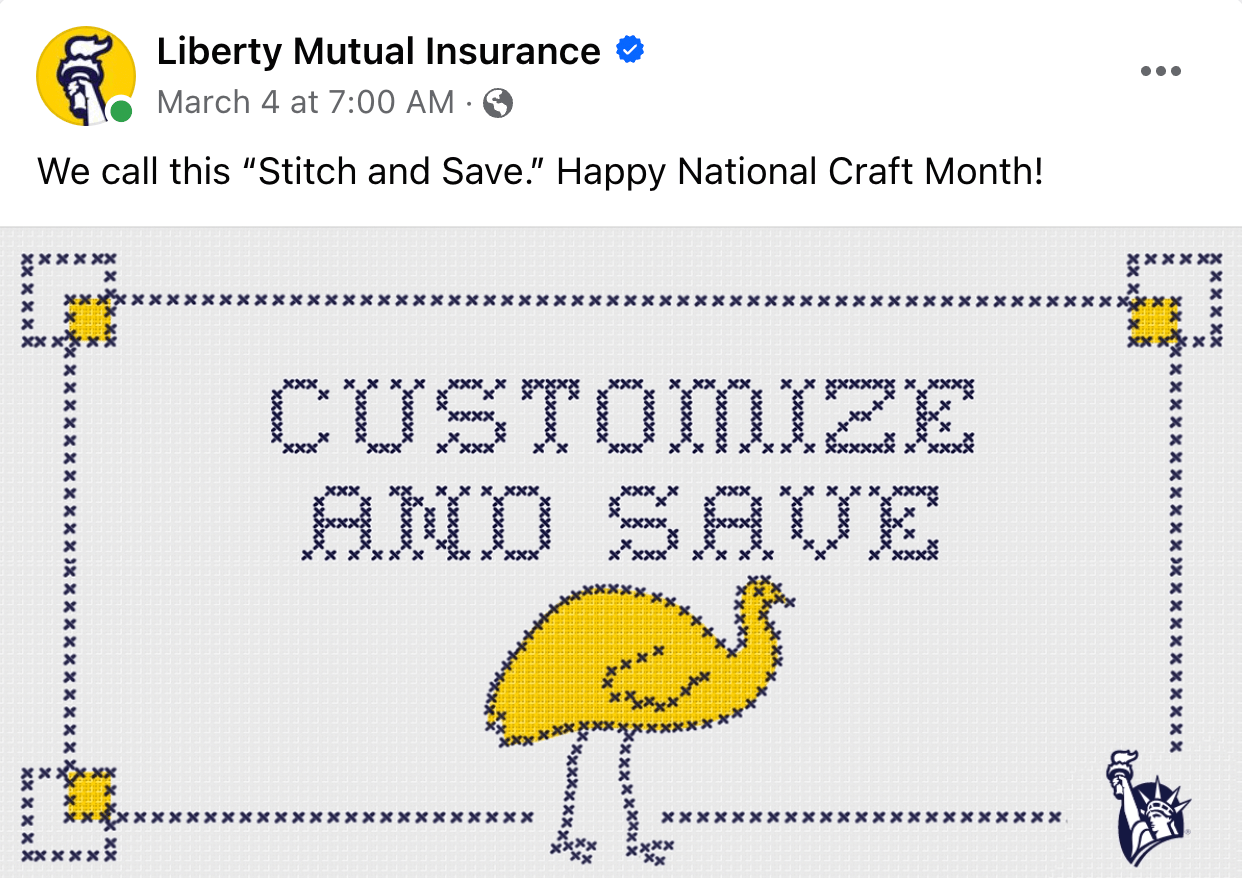Want your product or service to stand out in a crowded marketplace? Looking for a compelling way to position your brand?
In this article, we’ll explore how to use benefits and outcomes to differentiate your business.

Why Are Brand Benefits Important to Marketers?
In today's competitive business landscape, companies must deeply understand their target customers and how to position their products or services compellingly.
In 1960, Theodore Levitt explained a simple but powerful idea: People don't want a quarter-inch drill bit. What they actually want is a quarter-inch hole. In other words, customers don't buy features—they buy benefits. They buy the positive outcomes and experiences they believe your product or service will deliver.
Theodore called it “marketing myopia” when companies focus too much on their products and lose sight of what customers need and want. At its core, leveraging strong brand benefits focuses on what matters most to the customer rather than just touting product features.
By focusing on the brand benefits you provide, you accomplish several important things:
- You show customers you understand their needs and how your product or service helps them, building connections and trust.
- You differentiate yourself from competitors who only talk about themselves.
- You can discover opportunities for improvement and new offerings by deeply understanding the customer's perspective.
- You speak the customer's language rather than just internal jargon about features.
How to Improve Your Marketing Using Brand Benefits
Alan Weiss, founder and CEO of MarketingProfs and co-author of The Brand Benefits Playbook, shares his insights on using brand benefits as a powerful tool to differentiate your business, better serve your customer segments, and drive growth.
#1: The 3 Main Types of Benefits
Allen outlines three common brand benefit types found in consumer products:
Functional benefits: These are the product’s practical advantages that directly help the customer, such as saving time, reducing costs, or solving specific problems. Think of it as what the product does for the customer. Examples include ease of installation or reliability, such as a car’s fuel efficiency or software compatibility with existing systems.
Symbolic benefits: These appeal to a customer's sense of identity, values, or aspirations. It's more about how the product or service makes them feel about themselves or how they believe others will perceive them. Using the product might make them feel successful, sophisticated, environmentally conscious, or part of a desirable group. Apple's sleek designs and Patagonia's commitment to sustainability provide symbolic benefits for many customers.
Similarly, when a hospital like St. Jude's says it's “finding cures and saving lives,” supporters feel part of something meaningful and important. When Nike says, “Just Do It,” it taps into people's desire to be bold, athletic, and motivated.
Experiential benefits: These focus on the sensory or emotional aspects the customer experiences while using the product or service. They're about creating a pleasant feeling, such as excitement, empathy, comfort, or nostalgia. Apple is great at this, from the experience of slowly unboxing its sleekly designed products to the layout of its stores. Similarly, Disneyland delivers powerful experiential benefits through every aspect of its theme parks. Even products as simple as cinnamon rolls can evoke positive experiential benefits.

While business-to-business (B2B) companies primarily focus on functional benefits, the most effective marketing often incorporates multiple benefits.
For example, a luxury car company might emphasize functional benefits like performance and safety, symbolic benefits like prestige and success, and experiential benefits like the thrill of driving and the comfort of the interior. Apple is another example—they highlight functional benefits like powerful chips. Still, they also create great in-store experiences and make people feel creative, stylish, and innovative for using their products.
Get World-Class Marketing Training — All Year Long!
Are you facing doubt, uncertainty, or overwhelm? The Social Media Marketing Society can help.
Each month, you’ll receive training from trusted marketing experts, covering everything from AI to organic social marketing. When you join, you’ll also get immediate access to:
- A library of 100+ marketing trainings
- A community of like-minded marketers
- Monthly online community meetups
- Relevant news and trends updates
#2: Apply Benefits to Your Marketing Efforts
‘Laddering’
Which benefits should you prioritize? One technique for gaining a deeper understanding of what customers really value is called “laddering.”
Start by asking a customer why they like a particular feature of your product. When they answer, ask why that reason is important to them. Keep asking “why” to dig deeper until you uncover the underlying benefit they genuinely care about.
For example, when marketing a prestigious university, you might ask a parent why they want their child to attend. They may say it's to help their child's career. But there's often a deeper reason. If you keep asking “why,” you might find that the parent wants to feel secure about their child's future. A good education and career can give the parent peace of mind. They'll feel like their child will be okay in life. As a marketer, you might not directly ask about “security,” but you can infer it from the parent's answers and concerns.
So, while a successful career is the surface-level reason (a functional benefit), the deeper emotional reason is the parent's sense of security (a symbolic benefit). That sense of security is the core benefit to emphasize in your marketing.
By thoroughly understanding the key benefits your customers care about, you can craft marketing messages that truly resonate with your target audience.
Market Segmentation
Another crucial aspect of using brand benefits is segmenting your market. Allen explains that different customer groups prioritize different benefits within a broad market. Understanding this allows you to create more relevant, targeted messaging.
First, define your market. Remember, a market is just an idea—not something tangible. You have to decide how to define the boundaries of your market. Next, consider the different benefits that customers in that market are looking for in your product category.
Different customers will prioritize different benefits. Some might care more about price, while others prioritize quality or convenience.
For example, in the home insurance market, some customers will care most about customization and only pay for what they need (functional benefit), which is what Liberty Mutual focuses its marketing campaigns on.

Discover Proven Marketing Strategies and Tips
Want to go even deeper with your marketing? Check out the Social Media Marketing Podcast! Publishing weekly since 2012, the Social Media Marketing Podcast helps you navigate the constantly changing marketing jungle, with expert interviews from marketing pros.
But don’t let the name fool you. This show is about a lot more than just social media marketing. With over 600 episodes and millions of downloads each year, this show has been a trusted source for marketers for well over a decade.

Other segments may care more about feeling protected by a reliable, secure brand (symbolic benefit), which comes through in USAA's military-focused branding.
Understanding how customers make trade-offs between different benefits can help you see distinct market segments. Your messaging should emphasize the benefits that matter most to each target segment. Liberty Mutual might find that some customers care most about comprehensive coverage while others prioritize affordable prices. The company can create targeted messaging for each segment by understanding these different needs.
In B2B marketing, you might find overlaps between different verticals when you segment based on benefits. For example, some people in healthcare and retail may have similar needs and look for the same benefits. Focusing on benefits rather than just splitting by industry makes your brand message clearer and more targeted. Despite being in the highly competitive home insurance market, Liberty Mutual has successfully identified a segment prioritizing convenience and lower prices.
Instead of trying to be everything to everyone, Allen recommends focusing on the two or three benefits that matter most to your largest or highest-priority customer segment.
#3: Prioritize Your Marketing by Segment
Once you've identified your key market segments, it's time to choose which segment(s) to focus on. Consider these factors:
- Segment size and growth potential: How large is the segment, and how quickly is it growing? Larger, faster-growing segments may be more attractive.
- Competitive landscape: How many competitors are already targeting this segment? What unique benefits can you offer that competitors can't match?
- Your capabilities: Do you have the right products, services, skills, and resources to serve this segment well? If not, what investments will you need to make?
- Alignment with your brand: Does serving this segment fit your brand identity and values? Will it enhance or detract from your brand?
Based on this analysis, choose one or two priority segments to focus on first.
For example, Allen worked with a cybersecurity company to determine the key benefits customers look for in this market. Through this process, the company realized that different customers prioritized different benefits. Some cared a lot about compatibility with their existing technology, while others just wanted the lowest price possible.
This insight helped the company see that Amazon was entering their market. Amazon targeted the segment that wanted low prices, even if it meant less comprehensive protection. By understanding the benefits that mattered to different segments, the cybersecurity company could map out where competitors were playing in the market.
Most companies don't think about the market in terms of customer benefits like this. So if you do, it gives you a significant advantage. You can see opportunities and threats that others miss. Once you have this “benefit map” of the market, you can decide where to position your business to compete most effectively.
‘Migration Targeting’
When deciding which customers to target, you don't have to stick to just one group forever. You can plan to expand to other groups over time. Allen calls this “migration targeting.” To do this, you first focus on serving one segment of customers well. Then, you start developing the skills and abilities needed to provide the benefits that a different segment wants.
As you build those competencies, you can gradually target that additional segment. Eventually, you'll be able to serve both groups effectively. In The Brand Benefits Playbook, Allen discusses “stress tests” to help with this process. One test examines your company's competencies—what you're good at providing. Another test looks at your competition and where they're focused.
By understanding your strengths and competitors' positions, you can choose which segments to target now and which ones to expand into later.
#4: Use Benefits to Grow Your Brand Recognition
A deep understanding of brand benefits paves the way for a strong brand identity and business growth.
Think about Arm and Hammer. They started out just selling baking soda. If they had stuck with that, their market would have been small. But then they realized that baking soda is also good at reducing odors. They could expand into new products and markets by understanding this additional benefit.
You can now find Arm and Hammer in toothpaste, kitty litter, and many other products across different industries. They grew by leveraging the benefits their core product provided.
Smart companies do this. They figure out their key benefits and then look for new ways to deliver them to more customers. Sometimes, this means extending their brand into new product categories. Other times, it means partnering with other companies in joint ventures.

The key is to stay focused on your benefits and find new ways to deliver them to customers. That's a proven growth path. Recognizing your brand's core benefits opens opportunities to extend into new product lines, industries, and partnerships. Benefits act as a north star for identifying areas of expansion that will resonate with your audience and create customer loyalty.
Allen Weiss is founder and CEO of MarketingProfs, a business that trains B2B marketers. He’s also former director of Mindful CGU at Claremont Graduate University. His latest book is The Brand Benefits Playbook: Why Customers Aren’t Buying What You’re Selling and What to Do About It. You can find him on LinkedIn.
Other Notes From This Episode
- Connect with Michael Stelzner @Stelzner on Instagram and @Mike_Stelzner on Twitter.
- Watch this interview and other exclusive content from Social Media Examiner on YouTube.
Listen to the Podcast Now
This article is sourced from the Social Media Marketing Podcast, a top marketing podcast. Listen or subscribe below.
Where to subscribe: Apple Podcasts | Spotify | YouTube Music | YouTube | Amazon Music | RSS
✋🏽 If you enjoyed this episode of the Social Media Marketing podcast, please head over to Apple Podcasts, leave a rating, write a review, and subscribe.
Stay Up-to-Date: Get New Marketing Articles Delivered to You!
Don't miss out on upcoming social media marketing insights and strategies! Sign up to receive notifications when we publish new articles on Social Media Examiner. Our expertly crafted content will help you stay ahead of the curve and drive results for your business. Click the link below to sign up now and receive our annual report!
Attention Agency Owners, Brand Marketers, and Consultants

Introducing the Marketing Agency Show–our newest podcast designed to explore the struggles of agency marketers.
Join show host and agency owner, Brooke Sellas, as she interviews agency marketers and digs deep into their biggest challenges. Explore topics like navigating rough economic times, leveraging AI, service diversification, client acquisition, and much more.
Just pull up your favorite podcast app, search for Marketing Agency Show and start listening. Or click the button below for more information.

